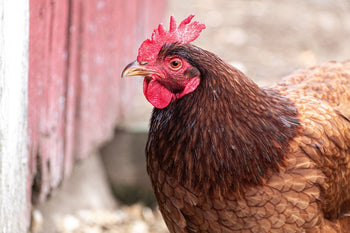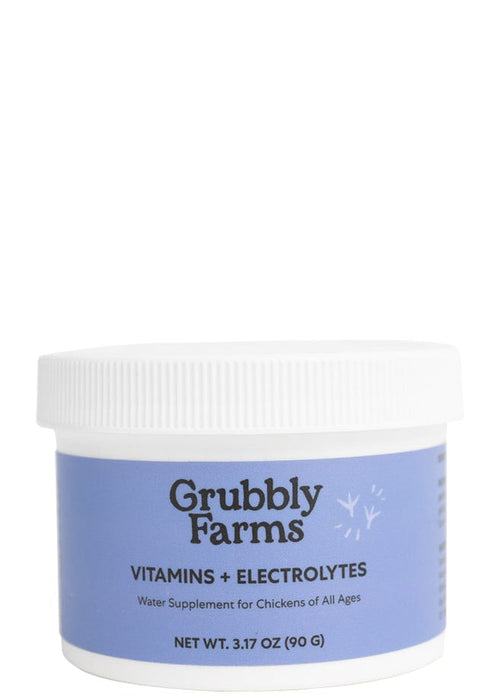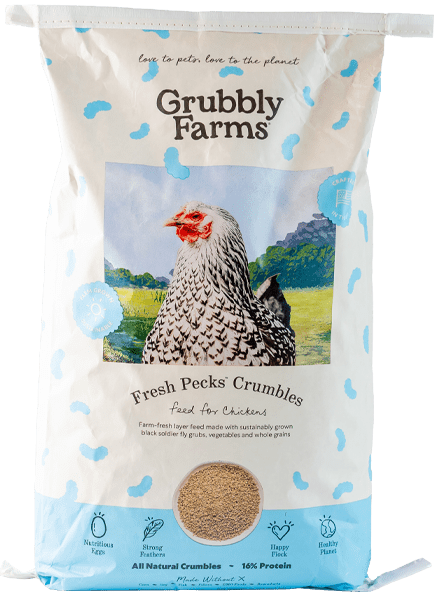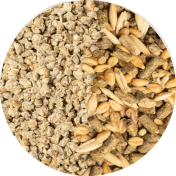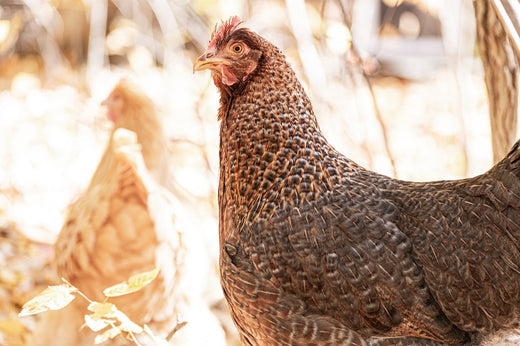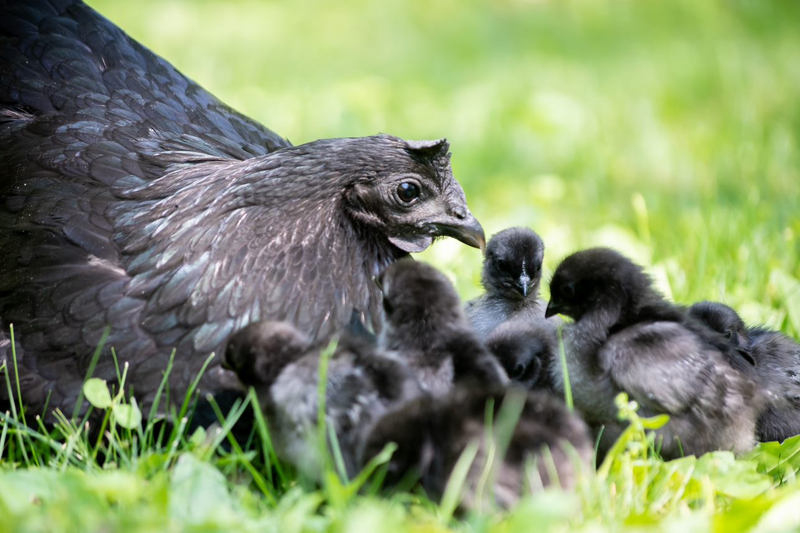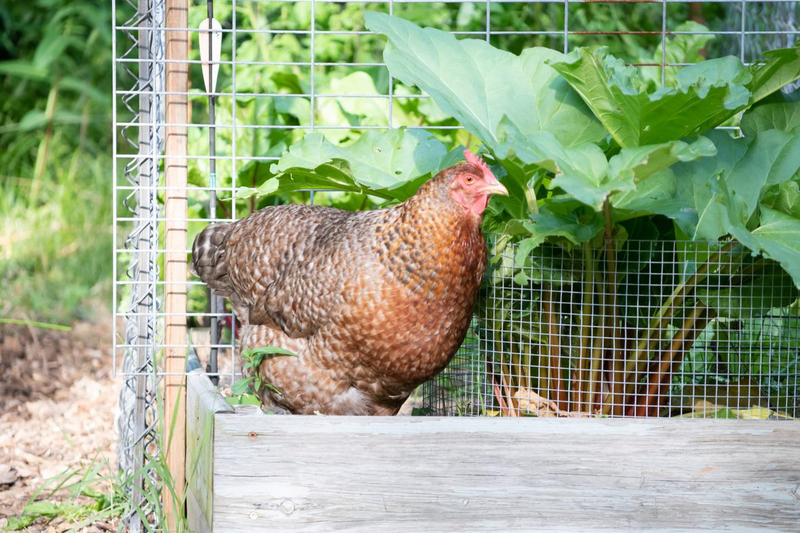Rhode Island Reds are a common backyard chicken breed that are best known for their superb egg laying abilities and extreme hardiness. These birds do very well adapting to different environments and even surviving on minimal care. At first glance, Rhode Island Reds may seem like a plain and boring chicken breed, but there are many unique features about this breed that make them a valuable and interesting addition to the backyard flock! Let’s take a closer look at the Rhode Island Red chicken breed.
As you might guess, Rhode Island Red chickens were named after the state where they were developed: Rhode Island. Rhode Island Reds are also the only chicken breed to have the unique privilege of being an official state bird. They were designated by the Rhode Island legislation as the state’s official state bird in 1954.

The Rhode Island Red chicken breed was first admitted into the American Poultry Association (APA) in 1904. Since they were developed in the United States and have yellow skin, they were put in the American class of chicken breeds. The American Bantam Association (ABA) also recognizes a bantam version of the Rhode Island Red breed. Rhode Island Red bantams are classed in the single comb, clean legged group of bantams.
Heritage Rhode Island Reds were originally developed to be dual-purpose birds. They were not bred for their good looks or for show purposes. Instead, the breed was developed to be more utilitarian. The breed was to be fast maturing and have a meaty frame so that they could be used for meat. The hens were also to be excellent layers so they could be raised as egg producers as well. A standard size Rhode Island Red hen should weigh around 6.5 lbs. and a standard size cock should weigh 8.5 lbs.
Despite their utilitarian origins, most Rhode Island Reds today are bred for egg production. However, you can still find breeders who are working on the heritage strains that are more utilitarian and dual-purpose.
Unique Features of Rhode Island Reds

One unique feature about the Rhode Island Red chicken breed is the fact that it is only recognized in one variety. Rhode Island Red chickens must have rich, dark, lustrous red plumage. Some black points in the tail and wings used to be acceptable, but recently APA judges have been considering any black plumage to be ‘smuttiness’ and undesirable in the breed. The red feathers can have a slight green sheen when seen in the sunlight, which gives the bird a smooth, glossy appearance. Despite being only one variety, Rhode Island Red chickens can have a stunning and beautiful appearance!
Rhode Island Red chickens are recognized in both single comb and rose comb varieties. Single comb Rhode Island Reds are by far the most popular variety of the breed but rose comb Rhode Island Reds have a unique appearance and tend to be more cold hardy. In both varieties, the comb, wattles, and earlobes must be red in color. Both rose and single combs should be medium size in hens and moderately large in cocks. The single comb should have five evenly serrated points and stand upright for both sexes.
Rhode Island Red chickens have a reddish horn beak and reddish bay eyes. Since they are an American class breed, they have yellow skin, shanks, and toes. According to the breed standard, a line of dark, reddish pigment running down either side of the shanks out to the tips of the toes is desirable. Rhode Island Reds have four toes and are clean legged.
Are Rhode Island Reds Good Layers?

Rhode Island Red chickens were developed to be excellent layers, which is one reason why they are such a popular backyard chicken breed! The hens lay large, brown eggs that can range in shades of light-medium brown to a dark brown color. One unique egg laying feature about Rhode Island Red hens is the fact that their eggs tend to increase in size as the hen ages. They are also known to start laying at a very early age. You can expect your Rhode Island Red pullets to start laying around 18-20 weeks of age. Some individuals have even been known to start laying as early as 16 weeks of age!
The number of eggs you can expect to get from your Rhode Island Red will vary depending on the strain of Rhode Island Red you have. Industrial Rhode Island Red strains bred for egg production will lay upwards of 200-300 eggs per year. Heritage strains of the Rhode Island Red will lay closer to 150-250 eggs per year. On average, expect 4-5 eggs a week from your Rhode Island Red hens.
Adaptability to Climate
Rhode Island Reds are known to be extremely tolerant of various environments. They are both heat tolerant and cold hardy. The production strains of Rhode Island Reds tend to have smaller body frames with moderate feathering, which makes them more heat tolerant. The heritage or standard strains of Rhode Island Reds will be moderately heat tolerant as well, however, they will also be more cold hardy.
The breed is well known to be adaptable to both warm and cold climates. They are a very self-sufficient breed and have developed hardy constitutions as well. This allows them to survive in just about any environment and even in minimal care situations. Rhode Island Red chickens will thrive when they are given the proper care in just about any climate.
In environments that stay warm year-round or experience hot weather during the summer, you will want to take precautions to prevent heat stress for your Rhode Island Reds. Make sure the coop is located in the shade and is well ventilated so that hot, humid air can escape. The birds should have plenty of access to shaded areas in their run and yard. You should also provide them with cool, fresh water daily.
In environments that experience cold weather or severe winters, you should take precautions to prevent cold stress in your Rhode Island Reds. Make sure you properly winterize the chicken coop so that it is draft-free but also well ventilated. The chicken run or enclosure should provide protection from winter weather and prevent exposure to wind chill or precipitation. Use insulating litter in the coop and enclosure and ensure your flock’s water stays unfrozen during cold weather.
Common Health Issues
One reason why Rhode Island Red chickens are so popular in backyard flocks is due to their hardy constitution. They are not prone to many health issues and tend to have strong immune systems for fighting diseases and illness. Production strain Rhode Island Red chickens tend to be less hardy than heritage strains. Many illnesses and diseases can be prevented through proper biosecurity and preventative measures. Here are some good biosecurity practices to implement for keeping your Rhode Island Reds healthy:
- Minimize contact with wild birds.
- Don't share equipment with other poultry keepers.
- Quarantine new birds for at least 3 weeks to watch for signs of illness before adding them to the flock.
- Keep a clean and well-ventilated coop.
- Feed a balanced diet for proper nutrition.
- Quarantine sick birds to prevent contagions from spreading and to make diagnosing and treating easier.
Despite their hardy constitutions, you should still take measures to prevent some health issues that can be common in backyard flocks:
External Parasites- External parasites, such as mites and lice, feed off the chicken’s feathers and blood. They commonly congregate around a chicken’s vent, but can also be found under the wings or in the head feathers during severe infestations. You can prevent external parasites from becoming an issue by making sure your Rhode Island Reds have access to a dust bath. A monthly health check can also help you catch and treat any external parasites before they become an infestation.
Frostbite- If you live in a region that experiences cold winter weather, you will want to take precautions to prevent frostbite during the winter. Rhode Island Red cocks are more prone to frostbite than the hens, however, if the hens also have tall combs they will benefit from frostbite prevention too. Minimizing moisture in the coop and preventing exposure to the elements are two ways to reduce the chance of frostbite. You can also apply a beeswax-based salve to the combs and wattles to prevent moisture from freezing on the skin, which can lead to frostbite.
Egg Binding- Given the fact that Rhode Island Red hens tend to lay eggs that increase in size as they age, egg binding can be a potential concern to keep in mind. Egg binding occurs when a hen cannot pass an egg properly. The combination of a large egg and weaker egg laying muscles in an aging hen can make egg binding a potential health issue in Rhode Island Red hens. Make sure your hens have access to supplemental calcium and be familiar with the signs and symptoms of egg binding to prevent it from becoming an issue in your flock!
Lifespan of Rhode Island Reds
The average lifespan of Rhode Island Red chickens depends on how the birds were bred. Heritage or standard bred Rhode Island Reds tend to have longer lifespans than industrial or production bred Rhode Island Reds. The average lifespan for a production Rhode Island Red chicken is 5-8 years. Heritage Rhode Island Reds will live closer to 9-10 years with some birds reaching upwards of 15 years of age!
Keep in mind that no matter the strain, the egg production will decline as the hens get older. Rhode Island Red chickens are most productive for the 1-3 years of their life. Production strains will lay extremely well for the first couple of years and then dramatically decrease in laying. Heritage strains will be steady producers for many years, but they won’t produce the yearly volume of eggs that production strains will.
Good genetics, a proper diet, healthy management, and practicing good biosecurity can all help your Rhode Island Reds live a productive and healthy life.
Temperament and Behavior

Rhode Island Red chickens tend to be on the threshold of great temperament and personality traits. The hens are known to be calm, friendly, and curious. However, production strain Rhode Island Reds tend to be more flighty and alert. All Rhode Island Reds are active and tend to be near the top of the pecking order in a backyard flock. Rhode Island Red roosters are reported to have varying temperaments. Some roosters are calm, sweet, and docile. Other roosters tend to be more assertive or even aggressive. All Rhode Island Red roosters will make great flock protectors.
The key to helping your flock of Rhode Island Red chickens be friendly and calm is to interact with them daily, especially when they are chicks. Hold them frequently when they are young and spend time observing them, being near them, or hand feeding them healthy snacks. You may want to avoid getting a Rhode Island Red rooster if you don’t want to run the risk of dealing with an aggressive rooster. If you want calm, docile, and friendly Rhode Island Reds, seek out heritage or standard bred birds.
Rhode Island Reds are not known to be extremely affectionate, but they are still calm and friendly birds who don’t mind being near their care takers.
Suitability for Backyard Flocks
Rhode Island Red chickens are ideal for backyard flocks if you want hardy birds who will lay you lots of eggs. Since the hens are more production minded, they rarely go broody. Heritage strain hens are more inclined to brood, and if given a clutch of eggs, they make great mothers. Rhode Island Reds love a free-range environment and will happily forage for much of their own diet. However, they can also adapt to confinement fine if they are given enough space. Here are some considerations to keep in mind when deciding if Rhode Island Reds will be a good fit for your backyard flock:
Urban Flocks- Rhode Island Reds may not be the best choice for urban flocks. Rhode Island Red chickens don’t tend to be a quiet breed, which may not be ideal for urban settings. They also prefer to have as much space as possible, even in a confined setting. If you do want to keep Rhode Island Reds in your urban flock, stick with a small flock that is appropriate for the amount of space you can give them.
Suburban Flocks- Again, in a suburban setting, a small flock of Rhode Island Reds would be ideal so that the birds can have as much space as possible. Avoid keeping no roosters, as their temperaments vary and they do crow a lot! If possible, free-range your Rhode Island Red flock in your suburban yard to keep them happy and stimulated!
Rural Flocks- Rhode Island Red chickens adapt very well to rural settings! They love to free-range and the roosters make great flock protectors. If you live in a rural setting, you might not have to worry as much about how noisy your flock is and you can make sure they have a spacious coop, run, and yard!
How to Care for Rhode Island Reds
Rhode Island Red chickens still need the same basic care as any other chicken breed. Chicks should be raised in a draft-free, safe brooder. The brooder should have absorbent litter that is easy to clean, food, water, and a heat source. Since Rhode Island Red chickens are a fast-maturing breed, the chicks will need plenty of space in their brooder as they grow.
Rhode Island Red chicks benefit from being fed a chick starter feed that contains 24% protein for the first 4 weeks. Then they can be switched to a grower feed up until they reach laying age. Alternatively, you can feed them a starter/grower feed that contains 19-20% protein starting at day one and continuing until the birds reach laying age. Grubbly Little Pecks is a complete chick starter/grower feed that can be fed to your Rhode Island Red brood! You can also introduce healthy snacks, treats, and forage as the chicks mature.
Rhode Island Red chicks should be ready to be weaned off of supplemental heat by the time they are about 4 weeks old and have their first set of juvenile feather developing. You can also introduce low roosts and perches for the chicks to explore after they are 4 weeks old. Rhode Island Red chickens can usually be graduated to an outdoor coop any time between 8-12 weeks of age. The birds should be fully feathered and the temperatures should be staying above 55°F. You should coop train the young birds to go into their coop and roost at night to keep them safe from predators.
The chicken coop should be predator proof, well-ventilated, and provide ample space for the number of Rhode Island Red chickens you are raising. The coop should also have food, water, roosts, and nesting boxes. A spacious outdoor run or enclosure should be attached to the coop so your Rhode Island Reds can enjoy being outside every day, which also helps keep the coop cleaner. Rhode Island Red chickens need about 3-4 sq ft of coop space per bird and at least 8-10 sq ft of run space per bird.
You should plan on keeping the coop litter clean on a regular basis so that no ammonia fumes build up or harmful pathogens start to develop. Make sure your flock has fresh water and plenty of food daily. Doing a monthly health check on the entire flock can also help you catch any signs of disease or parasites before they become a serious issue.
Rhode Island Red chickens should be fed a complete, balanced layer feed. Healthy snacks, treats, and access to forage can be used to add variety to their diet. Laying hens should also have access to free-choice supplemental calcium in the form of crushed oyster shells. Supplemental calcium is needed for the hens to create strong eggshells and have a healthy reproductive system.
Conclusion
Rhode Island Red chickens are a productive addition to the backyard flock! Originally bred as a utilitarian chicken breed, these birds excel at putting eggs on the table and are excellent at fending for themselves. They are a very hardy chicken breed that adapt well to various environments. Rhode Island Reds would make a friendly, entertaining, and productive addition to the backyard flock!





